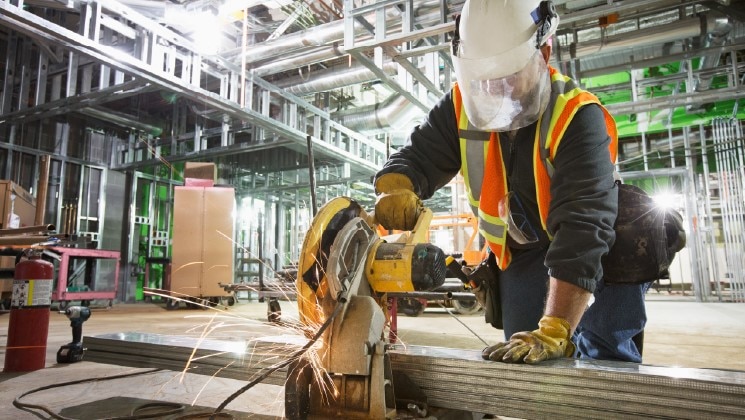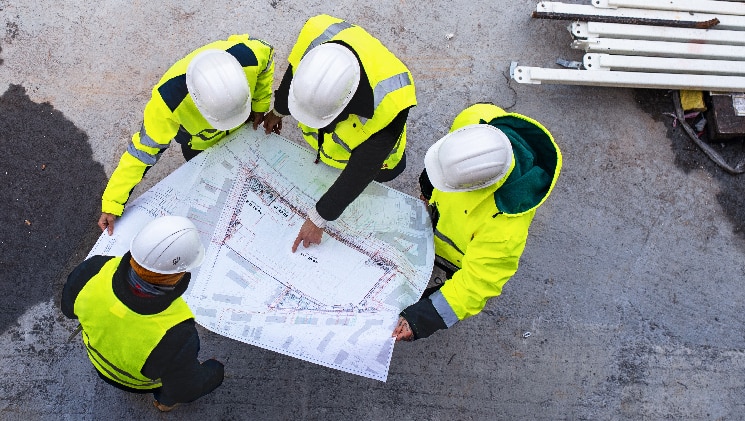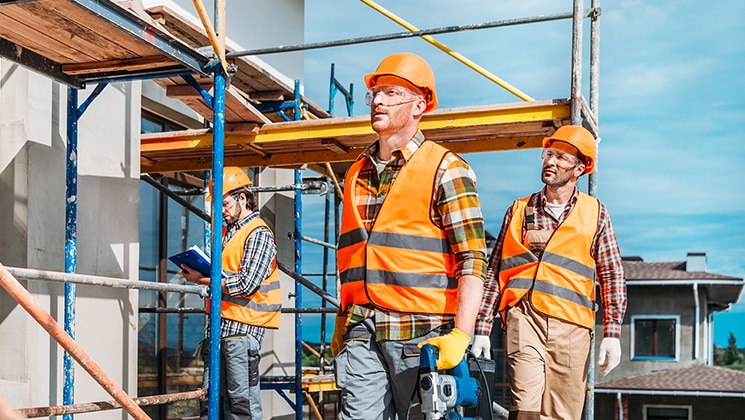
Resilient design has become a major focus in the construction industry, and for good reason: climate change, economic instability, and the frequency of natural disasters pose unique challenges that resilient design can help solve. But contractors who want to be successful over the long term need to think beyond resilient design; they also need to build resiliency into their entire business model.
In a recent interview, Ben Beauvais, construction executive for Global Risk Solutions at Liberty Mutual Insurance , spoke about the need for contractors to educate themselves on challenges in the industry and build risk mitigation into their foundation. “By understanding the different challenges that a construction site and the entire industry face, contractors can better adapt to disruptions and keep their projects and budgets on track,” Beauvais says.
How can construction companies become more resilient? According to Beauvais, there are three key areas of investment: employee health, climate risk, and industry data analytics.
Centering employee health
Employee safety is an ongoing challenge in the construction industry, where roughly 150,000 workers are injured each year – primarily from fall risks and contact with dangerous equipment. But construction companies that focus solely on physical injuries may be overlooking an even greater risk on their job sites: mental health and addiction.
“Challenges such as opioid misuse and mental health issues have affected the construction industry well before the pandemic. But now, with more financial strain and fewer available resources, employees are being affected more acutely,” Beauvais says.
According to the National Survey on Drug Use and Health conducted by the Substance Abuse and Mental Health Administration, 14.3% of construction workers have a substance abuse problem, compared to only 9.5% of the general population.
American Addiction Centers cites stress, mental illness (including TBIs from workplace injuries) and chronic pain as reasons that construction workers turn to substance use. By addressing these causes at the root, construction companies can mitigate on-site risk and take a proactive role in improving the lives and well-being of their employees. One way to do so is by investing in an employee assistance program (EAP), which provides free short-term counseling and referrals to employees.
Such programs have proven an effective way to reach at-risk workers and increase employee engagement. “By taking a proactive interest in an employee’s well-being on and off the job site, construction risk managers can help build more high-performing and resilient teams,” Beauvais says.
By taking a proactive interest in an employee’s well-being on and off the job site, construction risk managers can help build more high-performing and resilient teams.
Evaluating climate risk
Climate change also poses an enormous challenge for the construction industry. Rising water levels, erosion, fire risk, and other natural disasters can put construction projects at risk – particularly for developers or contractors who may take on large-scale projects in environments that aren’t familiar to them. According to Raken Co-founder Sergey Sundukovskiy, the construction industry loses $4 billion from weather-related delays alone – a number that is only increasing as the climate becomes more unpredictable.
To address these concerns, Beauvais suggests investing in technology that can gather data on environmental risk factors. “By fully examining the environment — like soil conditions, the slope of the land or the location on a potential flood plain — and the risks they could present for a project, contractors can create more resilient buildings that better withstand severe weather and other natural catastrophes,” Beauvais said.
The need for this kind of technology prompted Liberty Mutual to partner with Jupiter Intelligence, a data provider that uses predictive data to assess climate risk. This data allows Liberty Mutual to tailor insurance solutions based on company needs, and construction companies can leverage it to reduce risk. Beauvais says: “We’re excited about how our work with Jupiter Intelligence can help our customers build resiliency into the construction process right from the start.”
By listening to our customers and developing solutions to respond to their needs — whether that’s through data, technology or risk management products — they can more confidently prepare for whatever lies ahead.
Benchmarking for success
Data is also at the core of Beauvais’s third resilience strategy. Using benchmarking tools and analytics, contractors can see how their current business model stacks up against competitors. It also ensures they are implementing best practices in an effective way. And benchmarking and other data tooling are particularly useful during times of economic uncertainty, like the current pandemic, when companies aren’t sure how to move forward.
Liberty Mutual Surety offers both consulting and benchmark reporting to help companies make the right decision based on industry data. “Our surety team has a tremendous amount of experience assessing financial metrics for construction companies and extensive access to valuable industry information,” Beauvais says. “The reports analyze factors like liquidity, leverage, profitability, cash flow, efficiency and backlog ratios to help clients address gaps and maintain competitive advantage relative to their peers.”
By understanding their financial position within the industry, companies can make smarter decisions and proactively address potential problems. Beauvais adds, “These capabilities are helping contractors and owners adopt best practices, make improvements, and know where they stand within the industry so they can maintain an advantage as they bid and build.”
Building a solid foundation
Focusing on resiliency helps keep us safe. It also ensures that construction companies can continue to support employees while providing high-quality infrastructure, no matter what the future holds.
For Ben Beauvais, the path to resiliency is clear: “By listening to our customers and developing solutions to respond to their needs — whether that’s through data, technology or risk management products — they can more confidently prepare for whatever lies ahead.”
Related insights
This website is general in nature, and is provided as a courtesy to you. Information is accurate to the best of Liberty Mutual’s knowledge, but companies and individuals should not rely on it to prevent and mitigate all risks as an explanation of coverage or benefits under an insurance policy. Consult your professional advisor regarding your particular facts and circumstance. By citing external authorities or linking to other websites, Liberty Mutual is not endorsing them.



